#Electric Vehicles
Text
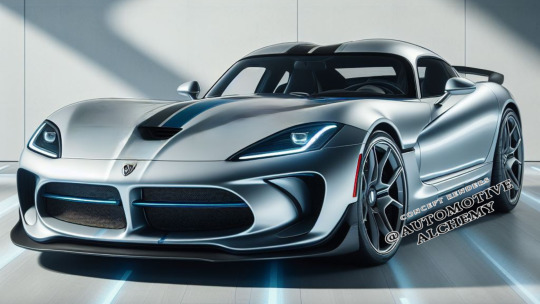
Dodge Viper SRT-E All Electric Supercar Concept
#autos#cars#automotive#coupe#luxury car#sports cars#dodge concept#dodge#muscle car#american muscle car#hemi#classic cars#classic car#dodge viper#electric cars#electronic#electric vehicles#elegant
86 notes
·
View notes
Text
Tesla's Dieselgate

Elon Musk lies a lot. He lies about being a “utopian socialist.” He lies about being a “free speech absolutist.” He lies about which companies he founded:
https://www.businessinsider.com/tesla-cofounder-martin-eberhard-interview-history-elon-musk-ev-market-2023-2
He lies about being the “chief engineer” of those companies:
https://www.quora.com/Was-Elon-Musk-the-actual-engineer-behind-SpaceX-and-Tesla
He lies about really stupid stuff, like claiming that comsats that share the same spectrum will deliver steady broadband speeds as they add more users who each get a narrower slice of that spectrum:
https://www.eff.org/wp/case-fiber-home-today-why-fiber-superior-medium-21st-century-broadband
The fundamental laws of physics don’t care about this bullshit, but people do. The comsat lie convinced a bunch of people that pulling fiber to all our homes is literally impossible — as though the electrical and phone lines that come to our homes now were installed by an ancient, lost civilization. Pulling new cabling isn’t a mysterious art, like embalming pharaohs. We do it all the time. One of the poorest places in America installed universal fiber with a mule named “Ole Bub”:
https://www.newyorker.com/tech/annals-of-technology/the-one-traffic-light-town-with-some-of-the-fastest-internet-in-the-us
Previous tech barons had “reality distortion fields,” but Musk just blithely contradicts himself and pretends he isn’t doing so, like a budget Steve Jobs. There’s an entire site devoted to cataloging Musk’s public lies:
https://elonmusk.today/
But while Musk lacks the charm of earlier Silicon Valley grifters, he’s much better than they ever were at running a long con. For years, he’s been promising “full self driving…next year.”
https://pluralistic.net/2022/10/09/herbies-revenge/#100-billion-here-100-billion-there-pretty-soon-youre-talking-real-money
He’s hasn’t delivered, but he keeps claiming he has, making Teslas some of the deadliest cars on the road:
https://www.washingtonpost.com/technology/2023/06/10/tesla-autopilot-crashes-elon-musk/
Tesla is a giant shell-game masquerading as a car company. The important thing about Tesla isn’t its cars, it’s Tesla’s business arrangement, the Tesla-Financial Complex:
https://pluralistic.net/2021/11/24/no-puedo-pagar-no-pagara/#Rat
Once you start unpacking Tesla’s balance sheets, you start to realize how much the company depends on government subsidies and tax-breaks, combined with selling carbon credits that make huge, planet-destroying SUVs possible, under the pretense that this is somehow good for the environment:
https://pluralistic.net/2021/04/14/for-sale-green-indulgences/#killer-analogy
But even with all those financial shenanigans, Tesla’s got an absurdly high valuation, soaring at times to 1600x its profitability:
https://pluralistic.net/2021/01/15/hoover-calling/#intangibles
That valuation represents a bet on Tesla’s ability to extract ever-higher rents from its customers. Take Tesla’s batteries: you pay for the battery when you buy your car, but you don’t own that battery. You have to rent the right to use its full capacity, with Tesla reserving the right to reduce how far you go on a charge based on your willingness to pay:
https://memex.craphound.com/2017/09/10/teslas-demon-haunted-cars-in-irmas-path-get-a-temporary-battery-life-boost/
That’s just one of the many rent-a-features that Tesla drivers have to shell out for. You don’t own your car at all: when you sell it as a used vehicle, Tesla strips out these features you paid for and makes the next driver pay again, reducing the value of your used car and transfering it to Tesla’s shareholders:
https://www.theverge.com/2020/2/6/21127243/tesla-model-s-autopilot-disabled-remotely-used-car-update
To maintain this rent-extraction racket, Tesla uses DRM that makes it a felony to alter your own car’s software without Tesla’s permission. This is the root of all autoenshittification:
https://pluralistic.net/2023/07/24/rent-to-pwn/#kitt-is-a-demon
This is technofeudalism. Whereas capitalists seek profits (income from selling things), feudalists seek rents (income from owning the things other people use). If Telsa were a capitalist enterprise, then entrepreneurs could enter the market and sell mods that let you unlock the functionality in your own car:
https://pluralistic.net/2020/06/11/1-in-3/#boost-50
But because Tesla is a feudal enterprise, capitalists must first secure permission from the fief, Elon Musk, who decides which companies are allowed to compete with him, and how.
Once a company owns the right to decide which software you can run, there’s no limit to the ways it can extract rent from you. Blocking you from changing your device’s software lets a company run overt scams on you. For example, they can block you from getting your car independently repaired with third-party parts.
But they can also screw you in sneaky ways. Once a device has DRM on it, Section 1201 of the DMCA makes it a felony to bypass that DRM, even for legitimate purposes. That means that your DRM-locked device can spy on you, and because no one is allowed to explore how that surveillance works, the manufacturer can be incredibly sloppy with all the personal info they gather:
https://www.cnbc.com/2019/03/29/tesla-model-3-keeps-data-like-crash-videos-location-phone-contacts.html
All kinds of hidden anti-features can lurk in your DRM-locked car, protected from discovery, analysis and criticism by the illegality of bypassing the DRM. For example, Teslas have a hidden feature that lets them lock out their owners and summon a repo man to drive them away if you have a dispute about a late payment:
https://tiremeetsroad.com/2021/03/18/tesla-allegedly-remotely-unlocks-model-3-owners-car-uses-smart-summon-to-help-repo-agent/
DRM is a gun on the mantlepiece in Act I, and by Act III, it goes off, revealing some kind of ugly and often dangerous scam. Remember Dieselgate? Volkswagen created a line of demon-haunted cars: if they thought they were being scrutinized (by regulators measuring their emissions), they switched into a mode that traded performance for low emissions. But when they believed themselves to be unobserved, they reversed this, emitting deadly levels of NOX but delivering superior mileage.
The conversion of the VW diesel fleet into mobile gas-chambers wouldn’t have been possible without DRM. DRM adds a layer of serious criminal jeopardy to anyone attempting to reverse-engineer and study any device, from a phone to a car. DRM let Apple claim to be a champion of its users’ privacy even as it spied on them from asshole to appetite:
https://pluralistic.net/2022/11/14/luxury-surveillance/#liar-liar
Now, Tesla is having its own Dieselgate scandal. A stunning investigation by Steve Stecklow and Norihiko Shirouzu for Reuters reveals how Tesla was able to create its own demon-haunted car, which systematically deceived drivers about its driving range, and the increasingly desperate measures the company turned to as customers discovered the ruse:
https://www.reuters.com/investigates/special-report/tesla-batteries-range/
The root of the deception is very simple: Tesla mis-sells its cars by falsely claiming ranges that those cars can’t attain. Every person who ever bought a Tesla was defrauded.
But this fraud would be easy to detect. If you bought a Tesla rated for 353 miles on a charge, but the dashboard range predictor told you that your fully charged car could only go 150 miles, you’d immediately figure something was up. So your Telsa tells another lie: the range predictor tells you that you can go 353 miles.
But again, if the car continued to tell you it has 203 miles of range when it was about to run out of charge, you’d figure something was up pretty quick — like, the first time your car ran out of battery while the dashboard cheerily informed you that you had 203 miles of range left.
So Teslas tell a third lie: when the battery charge reached about 50%, the fake range is replaced with the real one. That way, drivers aren’t getting mass-stranded by the roadside, and the scam can continue.
But there’s a new problem: drivers whose cars are rated for 353 miles but can’t go anything like that far on a full charge naturally assume that something is wrong with their cars, so they start calling Tesla service and asking to have the car checked over.
This creates a problem for Tesla: those service calls can cost the company $1,000, and of course, there’s nothing wrong with the car. It’s performing exactly as designed. So Tesla created its boldest fraud yet: a boiler-room full of anti-salespeople charged with convincing people that their cars weren’t broken.
This new unit — the “diversion team” — was headquartered in a Nevada satellite office, which was equipped with a metal xylophone that would be rung in triumph every time a Tesla owner was successfully conned into thinking that their car wasn’t defrauding them.
When a Tesla owner called this boiler room, the diverter would run remote diagnostics on their car, then pronounce it fine, and chide the driver for having energy-hungry driving habits (shades of Steve Jobs’s “You’re holding it wrong”):
https://www.wired.com/2010/06/iphone-4-holding-it-wrong/
The drivers who called the Diversion Team weren’t just lied to, they were also punished. The Tesla app was silently altered so that anyone who filed a complaint about their car’s range was no longer able to book a service appointment for any reason. If their car malfunctioned, they’d have to request a callback, which could take several days.
Meanwhile, the diverters on the diversion team were instructed not to inform drivers if the remote diagnostics they performed detected any other defects in the cars.
The diversion team had a 750 complaint/week quota: to juke this stat, diverters would close the case for any driver who failed to answer the phone when they were eventually called back. The center received 2,000+ calls every week. Diverters were ordered to keep calls to five minutes or less.
Eventually, diverters were ordered to cease performing any remote diagnostics on drivers’ cars: a source told Reuters that “Thousands of customers were told there is nothing wrong with their car” without any diagnostics being performed.
Predicting EV range is an inexact science as many factors can affect battery life, notably whether a journey is uphill or downhill. Every EV automaker has to come up with a figure that represents some kind of best guess under a mix of conditions. But while other manufacturers err on the side of caution, Tesla has the most inaccurate mileage estimates in the industry, double the industry average.
Other countries’ regulators have taken note. In Korea, Tesla was fined millions and Elon Musk was personally required to state that he had deceived Tesla buyers. The Korean regulator found that the true range of Teslas under normal winter conditions was less than half of the claimed range.
Now, many companies have been run by malignant narcissists who lied compulsively — think of Thomas Edison, archnemesis of Nikola Tesla himself. The difference here isn’t merely that Musk is a deeply unfit monster of a human being — but rather, that DRM allows him to defraud his customers behind a state-enforced opaque veil. The digital computers at the heart of a Tesla aren’t just demons haunting the car, changing its performance based on whether it believes it is being observed — they also allow Musk to invoke the power of the US government to felonize anyone who tries to peer into the black box where he commits his frauds.

If you'd like an essay-formatted version of this post to read or share, here's a link to it on pluralistic.net, my surveillance-free, ad-free, tracker-free blog:
https://pluralistic.net/2023/07/28/edison-not-tesla/#demon-haunted-world

This Sunday (July 30) at 1530h, I’m appearing on a panel at Midsummer Scream in Long Beach, CA, to discuss the wonderful, award-winning “Ghost Post” Haunted Mansion project I worked on for Disney Imagineering.

Image ID [A scene out of an 11th century tome on demon-summoning called 'Compendium rarissimum totius Artis Magicae sistematisatae per celeberrimos Artis hujus Magistros. Anno 1057. Noli me tangere.' It depicts a demon tormenting two unlucky would-be demon-summoners who have dug up a grave in a graveyard. One summoner is held aloft by his hair, screaming; the other screams from inside the grave he is digging up. The scene has been altered to remove the demon's prominent, urinating penis, to add in a Tesla supercharger, and a red Tesla Model S nosing into the scene.]

Image:
Steve Jurvetson (modified)
https://commons.wikimedia.org/wiki/File:Tesla_Model_S_Indoors.jpg
CC BY 2.0
https://creativecommons.org/licenses/by/2.0/deed.en
#pluralistic#steve stecklow#autoenshittification#norihiko shirouzu#reuters#you're holding it wrong#r2r#right to repair#range rage#range anxiety#grifters#demon-haunted world#drm#tpms#1201#dmca 1201#tesla#evs#electric vehicles#ftc act section 5#unfair and deceptive practices#automotive#enshittification#elon musk
8K notes
·
View notes
Text
Electric Cars getting transported on an open deck catch on fire after the salt water shorts their batteries. 🤔
#pay attention#educate yourself#educate yourselves#reeducate yourself#knowledge is power#reeducate yourselves#think for yourself#think for yourselves#think about it#do your homework#do your research#do your own research#question everything#ask yourself questions#ask yourself#electric vehicles
2K notes
·
View notes
Text
PETITION TO STOP UNETHICAL COBALT MINING IN CONGO!!
Sign and share with as many people as you can!!!!! Many people, including little kids, are mining in unsafe and unethical conditions in Congo. Sign this petition to stop these horrible conditions and violations of human rights and advocate for boycotting companies that profit from these horrible conditions eg. tech companies, vapes etc!!!!!
#stop terrorism against Congo#democratic republic of the congo#free congo#congo#dr congo#democratic republic of congo#help congo#save congo#human rights#human rights violations#humanitarian aid#disposable vape#vapers#vapelife#vapeshop#vapefam#tesla#teslamotors#teslamodely#teslacars#elonmusk#elon#electric vehicles#iphone#macbook#cellphone#techreview#stop forced labour in Congo#stop human rights violations upon Congolese people#save the children
245 notes
·
View notes
Text
Electric buses and electric trains electric buses and electric train’s electric buses and electric trains eleCTRIC BUSES AND ELECTRIC TRAINS ELECTRIC BUSES AND ELECTRIC TRAINS ELECTRIC BUSES AND ELECTRIC TRAINS ELECTRIC BUSES AND ELECTRIC TRAINS
ELECTRIC BUSES AND ELECTRIC TRAINS!!!!!!!!!!!!!!!!
#solarpunk#public transportation#bus#train#electric buses#electric train#electric vehicles#AND NOT ONLY ARE THEY ELECTRIC BUSES AND ELECTRIC TRAINS#BUT THEY ARE CHARGED THROUGH ELECTRICITY GAINED BY RENEWABLE ENERGY#BUT SERIOUSLY COME ON WE NEED MORE PUBLIC TRANSPORTATION#THAT IS NOT RUN ON FOSSIL FULES#YOU!#YEAH YOU!#GO SEE WHO YOU NEED TO TALK TO IN ORDER TO GET SOME OF THAT IN YOUR CITY#MAYBE CITY HALL
435 notes
·
View notes
Text

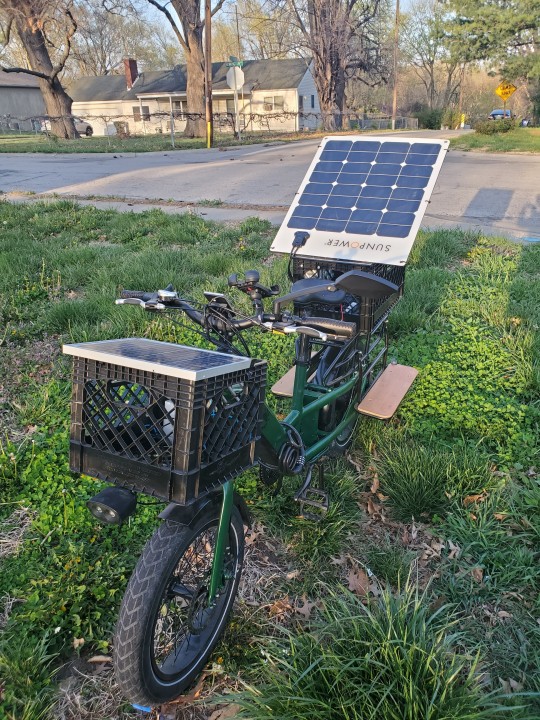
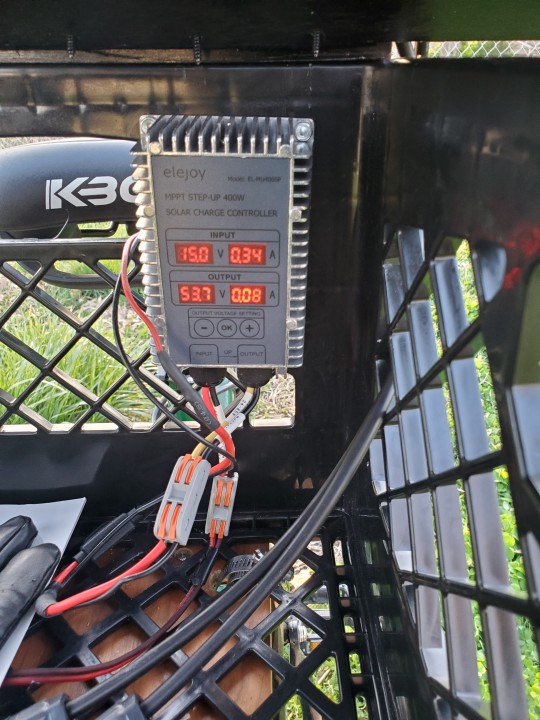


Day 5 or 6 of working on the solar bike. The main bike is effectivaly finished. Decided to go lightweight on everything and it was definantly the way to go. On the back is a 24qt milk crate big enough to hold another few bike batteries. That has a thin as possible sheet of hobby plywood above it that is ziptied to the 50w flexible solar panel. And mounted to the milkcrate with hobby screws. The panel recharges the bike through a mppt step up charge controller. The front panel charges just a simple 5v battery pack for my phone. All in all, I think it turned out well.
224 notes
·
View notes
Text
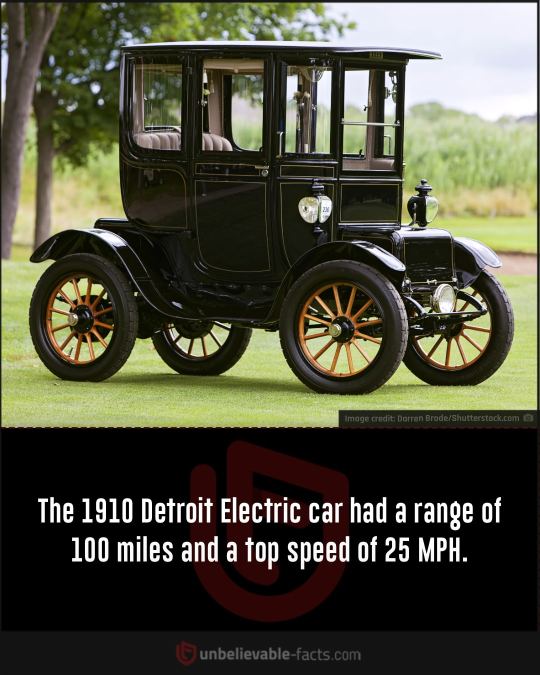
365 notes
·
View notes
Text
"The prospects of the world staying within the 1.5C limit on global heating have brightened owing to the “staggering” growth of renewable energy and green investment in the past two years, the chief of the world’s energy watchdog has said.
Fatih Birol, the executive director of the International Energy Agency, and the world’s foremost energy economist, said much more needed to be done but that the rapid uptake of solar power and electric vehicles were encouraging.
“Despite the scale of the challenges, I feel more optimistic than I felt two years ago,” he said in an interview. “Solar photovoltaic installations and electric vehicle sales are perfectly in line with what we said they should be, to be on track to reach net zero by 2050, and thus stay within 1.5C. Clean energy investments in the last two years have seen a staggering 40% increase.” ...
The IEA, in a report entitled Net Zero Roadmap, published on Tuesday morning, also called on developed countries with 2050 net zero targets, including the UK, to bring them forward by several years.
The report found “almost all countries must move forward their targeted net zero dates”, which for most developed countries are 2050. Some developed countries have earlier dates, such as Germany with 2045 and Austria and Iceland with 2040 and for many developing countries they are much later, 2060 in the case of China and 2070 for India.
Cop28, the UN climate summit to be held in Dubai this November and December, offered a key opportunity for countries to set out tougher emissions-cutting plans, Birol said.
He wants to see Cop28 agree a tripling of renewable energy by 2030, and a 75% cut in methane from the energy sector by the same date. The latter could be achieved at little cost, because high gas prices mean that plugging leaks from oil and gas wells can be profitable...
He also called for Cop28 to agree a doubling of energy efficiency. “To reduce fossil fuel emissions, we need to reduce demand for fossil fuels. This is a golden condition, if we are to reach our climate goals,” he said.
Birol stopped short of endorsing the call that some countries have made for a full phase-out of fossil fuels by 2050 to be agreed at Cop28, but he said all countries must work on reducing their fossil fuel use."
-via The Guardian, September 26, 2023
#climate change#sustainability#climate anxiety#climate and environment#climate crisis#climate news#climate emergency#global warming#environment#climate action#iea#international politics#international energy agency#cop28#united nations#greenhouse gas emissions#fossil fuels#renewable energy#solar power#electric vehicles#ev#solar panels#climate tech#good news#hope#hope posting#hopepunk
422 notes
·
View notes
Text

A video of an electric powered truck being recharged by a gasoline powered generator.
Go woke go broke.
288 notes
·
View notes
Text
A newspaper in my country has interviewed Siddharth Kara, one of the experts on what's going on in the cobalt mines in Congo. I think it's very well explained and a must-read to get an overview of this huge human rights violation that is going on. So here I translate it to English, hoping it will reach more people.
Siddharth Kara: "Every time we buy a new mobile phone, we put our foot around the neck of a child in the Congo"
Interview with the author of Cobalt Red: How the Blood of the Congo Powers Our Lives
"The poorest people in the world, including tens of thousands of children, dig the earth in toxic and very dangerous conditions to find cobalt," says journalist and writer Siddharth Kara (Knoxville, Tennessee, USA, 1974). The rechargeable batteries of our mobile phones, tablets, laptops or electric vehicles need this mineral that thousands of children, men, women and elderly people extract from the Congolese mines in inhumane conditions. Kara went there because he had specialized in research on slavery, and in Congo he found a modernized form of slavery. "Time has passed, but the colonial mentality has not," he explains. Everything he saw there and what was explained to him is recounted in Cobalt Red: How the Blood of the Congo Powers Our Lives (a book that does not have a translation into Catalan, but which has now been translated into Spanish, by Capitán Swing). The photographs and videos illustrating this interview were taken by himself.
—Was it difficult to write this book?
—Yes. Firstly, because of the specific difficulty of this area of the Congo: very dangerous, very militarized. There are armed militias. And for the local people there it is dangerous to talk to foreigners, because it can bring them consequences. It was difficult to get there, and then it was difficult to build trust with the people who worked there. I only managed it thanks to this trust, which we achieved little by little, until we were sure that we could do the research with guarantees and ethically.
—What drove you to the Congo cobalt mines?
—I had been doing research on slavery since 2000. Around 2016, some African colleagues contacted me and said: “Siddharth, something terrible is happening in the cobalt mines of the Congo, maybe you should go there”. I had no idea what cobalt was. I thought it was a color used for painting. I didn't know it was used for rechargeable batteries. It took me a couple of years to grasp its importance. Then I started making contacts to travel there, and in the summer of 2018 I went there.
—And what did you find there?
—The suffering and degradation I saw there were so intense that I decided to return there often to write a book. Hundreds of thousands of the world's poorest people, including tens of thousands of children, dig the earth in toxic and very dangerous conditions to find cobalt and put it into circulation, in a distribution chain that goes to the rechargeable devices and cars that people like you and me use every day. It was a human apocalypse, a total invasion of human rights and the dignity of the Congolese people.
—Could you describe what a mine like this is like, physically? How should we imagine it?
—Those who are at the top of the economic chain of cobalt exploitation like to distort the truth, and use the term "artisanal mine". This way, they evoke a kind of picturesque activity, but on the ground it is a dangerous and degrading job. A mine of this kind is a mass of tunnels, pits and trenches filled with thousands of people who dig with shovels, pieces of metal or directly with their bare hands. They fill a sack with earth, stone and mud. Some children rinse it in toxic pools to separate the mud from the cobalt stones, which a whole family pours into another sack. It might take twelve hours to fill a forty-kilo sack or two. For each sack they get paid a few euros, very few, and that's how they live every day. They survive.
This video was filmed by Siddharth Kara: [you can watch the video in the interview link, freely available without any paywall, here]
—Is there any rational organization in these mines? Is there someone who decides who does what to optimize work?
—Well, there is a whole gear designed so that the poor and the children of the Congo produce hundreds of thousands of tons of cobalt every year. There, work is usually divided by age and gender. Digging tunnels, which requires a lot of strength, is usually done by young men and teenagers. The digging of small pits and trenches that can be less meters deep is done by women and smaller children. Rinsing this toxic cobalt is usually done by the children. The merchant system to exploit these families and sell the cobalt they produce to the formal industrial mines is very well set up.
—What else do these people at the top of the chain invent?
—Another fiction they invent is that there is a difference between industrial and artisanal mining, and that they only buy from the industrial one, where there is no child labor. Not true: all cobalt is mined by children. All the cobalt that the children and peasants extract goes straight to industrial mining. In addition, there is no way to separate what comes from a bulldozer and what comes from a child, once it all pours into the same place in the facility that does the industrial processing before this cobalt is sent out of the Congo.
—You explain that the situation is particularly abusive for women.
—Yes. It is a lawless land, and violence is the norm. Women and girls always bear the brunt: they are victims of physical and sexual violence, and almost no one talks about it. It is a major tragedy: they are victims of sexual assaults that are committed in the mines themselves, while they collect the cobalt that we have in our mobile phones.
—You refer to all of this as a new episode of slavery. It is not the first time that the Congo has a decisive material for Western economic development. It happened with uranium for nuclear bombs, for example. History repeats itself.
—Exactly. It is important for people to understand that we are not witnessing an isolated case, but the latest episode in a long, very long, history of looting of the Congo, a very resource-rich country, dating back to the colonial period. The first automobile revolution required rubber for tires. The Congo had one of the largest rubber tree rainforests in the world. King Leopold [of Belgium] deployed a mercenary army of criminals and terrorists to enslave the population and make them work to get it. This inspired Joseph Conrad's novel Heart of Darkness. The Congo also has abundant reserves of gold, diamonds, nickel, lithium and other metals and minerals that make components for electronic devices…
—These mercenaries deployed by King Leopold, are they still there today, in one way or another?
—Yes. On the ground there are militias, or the army, or private security forces that the mining companies hire and that, sometimes, in addition to monitoring, do the work of recruiting children. Under the threat of an occupation, they force an entire town to dig. It's atrocious: we live in an age of supposed moral progress, where everyone shares the same human rights, and yet our global economic order has its knee on the necks of the children and the poor of the Congo, with this huge demand for cobalt that has to fuel the rechargeable economy.
—Has no Western country or international body done anything to stop it?
—No. No western country, no government, no big business has lifted a finger to address this tragedy. They talk about maintaining human rights standards in their supply chains, they talk about environmental sustainability, but it's only talk. That is why it is very important that journalists and researchers set foot on the land of the Congo and listen to what the Congolese have to say: that no one protects their rights or their dignity, that they are erasing the environment, that mining it is not done in a sustainable way and the whole countryside is polluted and destroyed by the mining operations. It is enough to walk ten minutes around a mine to see it.
—Does the same happen in all mines? Large Western companies that use cobalt often claim that theirs comes from artisanal mines that meet standards.
—Have they gone there? There is no decent mine in the Congo. It does not exist. I'll be happy to take any CEO of any tech company to their mines, where their cobalt comes from. We'll stand there, watching them extract it, and take a selfie with it. Everyone will realize that what is seen behind us is not decent. You will see destruction, millions of trees felled, installations that emit toxic gases that fall on the surrounding towns, on the children, on the animals, on the food. There is no decent mine in the Congo. And they know it. But who will believe the voice of a Congolese if they can drown it out with proclamations of human rights while they continue to make money without measure?




—Can you explain the role China plays in all of this? You say that it controls the supply chain.
—Yes. China controls about 70% of mining production in the Congo. Why do we accept China saying its mines are decent, if they don't even protect the human rights of their own people? Why do we accept a technology company or a car manufacturer saying, "My Chinese partners say they protect human rights there, and that's enough for me"? Why do we accept it?
—Why do you say that a certain transition to green energy is absolute hypocrisy?
—When the calls in favor of this transition consist of proposing to consumers that they buy electric vehicles instead of gasoline cars, this is hypocrisy. Because the cobalt and other elements that are used for the batteries of these cars are extracted using methods that are catastrophic for the environment. While in one part of the world we say we want to save the environment and leave a greener planet to our children, in another we are destroying both the planet and the future of their children. How can you save only part of the planet, turning the rest into a toxic dump? How can we give a green planet only to our children, while we let other people's children die? This is hypocritical.
—It is a reflection of the domination that the global north maintains over the south.
—We have never given Congo the opportunity to benefit from its own resources. It is a colonial mentality: time has passed, but the colonial mentality has not. It is the same type of colonial plunder from a century and a half ago. It is colonial to say: "Look, we need this, they have it, we take it from them in any way and, when we no longer need it, we leave a catastrophe behind us". There are companies that, recently, have started to pretend that they are becoming aware of this and promised that they would try to use batteries that did not have cobalt, but in reality they said: "Well, we've been caught, we'll look for another mechanism". And they do nothing to solve the catastrophe. Even if we no longer needed cobalt tomorrow, we would have to repair the destruction we have caused these past fifteen years.
—It's the big companies who should be required to react, but what do you think a Western consumer who has gotten upset reading you could do?
—The first step to progress in the conquest of human rights is always to make injustice known. Contribute to make everyone knows. Most people are good and, in their hearts, want no part of injustice. It is the few who move based on avarice and greed who pollute the rest of humanity. Outreach and awareness is the first step because it will inevitably activate a lot of people. Change always starts like this. In the case of cobalt, the second step is to think about our consumption habits. Every twelve months, the technology company I bought my phone from offers me a new one. Do I really need it? Every time we buy a new mobile phone, we put our foot on the neck of a child in the Congo. Better think twice, then.

#congo#human rights#electric vehicles#electric cars#colonialism#labour rights#china#environmentalism#rape culture#feminism#slavery#africa#cobalt#labor rights#anti racism#free congo#siddharth kara#childrens rights#history#💬
178 notes
·
View notes
Text
Alberta to introduce $200 annual electric vehicle tax
Other new tax changes in the Alberta budget include a new tax on vaping products sold in the province, and higher taxes of tobacco products
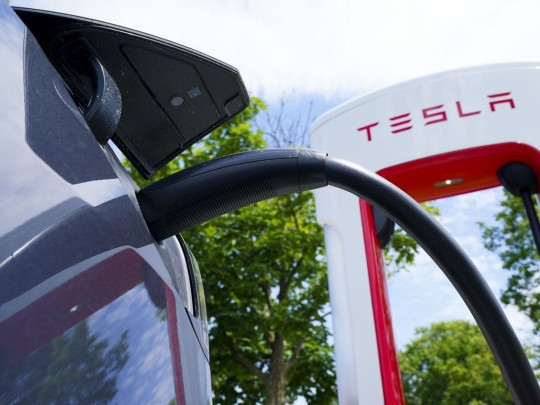
Electric car owners in Alberta will be forced to pay an annual $200 electric vehicle tax starting as early as January 2025.
In Alberta’s 2024 budget unveiled Thursday, the province says the new tax will be applied when electric car owners register their vehicle and will be in addition to the current registration fee. The province says electric vehicles tend to be heavier and cause more destruction on highways and roads, while owners don’t pay a provincial fuel tax. The tax will not apply to hybrid vehicles, the budget says.
During a Thursday news conference, Alberta Finance Minister Nate Horner said the tax rate is meant to be in line with the estimated fuel tax paid by a typical Alberta driver. Horner pointed to other jurisdictions that have moved forward with similar fees for electric vehicles.
Continue Reading
Tagging @abpoli
146 notes
·
View notes
Text
Thousands of autoworkers from foreign-owned non-union factories across the Southeast are seeking to organize their workplaces amid the electric vehicle (EV) manufacturing boom.
This widespread unionization effort is part of a push to extend membership in an industry that is rapidly expanding in new regions across the country.
But many workers who are party to the campaign say it is being met by union-busting.
#news#us news#uspol#us pol#uaw#united auto workers#united auto workers union#tennessee#tennessee news#electric vehicles#electric cars
181 notes
·
View notes
Text


Via print:
Looks like a toy. I love it!
#art#scifi#cyberpunk#sci fi#science fiction#digital art#scifiart#futuristic#aesthetic#scifi art#futurism#robot art#robotics#robots#machine#scifi girl#unusual vehicles#scifi vehicles#futurism vehicles#electric vehicles#vehicle#robot
315 notes
·
View notes
Text
A graveyard of electric green scooters that have run out of battery life👇
Since it's very expensive to replace the batteries, electric scooters that have reached the end of battery life cycle are being completely abandoned, also disposing them in any other way would be dangerous and expensive.
Environmentally friendly reliable Electric Vehicle transportation. 🤔
#pay attention#educate yourself#educate yourselves#knowledge is power#reeducate yourself#reeducate yourselves#think for yourself#think for yourselves#think about it#do your homework#electric vehicles#electric scooter
1K notes
·
View notes
Text
People in the notes of my post about Tesla removing the gear selectors from its new cars, asking how that's even legal, clearly have no idea just how incompetent and slow-paced the NHTSA is.
Halogen headlights weren't legal until 1979.
Composite headlights (the uniquely designed ones that aren't the old-school circle or square ones you see on older cars) weren't legal until 1984.
Adaptive High Beams (Matrix Headlights) were only recently legalized, in 2022; and the regulations and testing procedures in order to approve them are so haphazard and over-complicated compared to Europe's that not a single automaker has even made them available.
Side Curtain airbags still are not mandated in the United States.
Turn Signals can be red in the U.S., as opposed to the statistically safer amber which is mandatory in Europe.
Making that worse, those red turn signals are allowed to share lamps with the brake lights. This means if you have your turn signal on, 1/3 of your brake lights can’t do their job because they're too busy doing another job.
There is no law in the United States dictating that an electric car must put on its brake lights when Regen braking. In fact, the law specifically states that only the friction brakes are required to activate brake lights. You can bring a Hyundai Ioniq 5 & 6, Kia EV6, Genesis GV60, and many other EVs to a rapid, complete stop without ever activating the brake lights.
Early model Chevrolet Bolt EVs and some Mercedes-Benz EVs will activate the brake lights appropriately when slowing down, but will deactivate their brake lights once they've come to a complete stop, allowing the car to sit at a standstill in the road without any indicator that it isn't traveling at the same speed as you are.
It's completely up to the automaker to decide how (or even if) to implement regen brake lighting. EVs and Hybrids have been around since the late 1990s and this still hasn't changed.
The US government STILL only evaluates a vehicles crash safety by crash testing it at 35 mph into a flat wall and t-boning it with a barrier representing a 3,000 lb sedan. They don't do an offset frontal test or a truck-barrier side test like the IIHS has been doing for private insurance companies for over a decade.
The NHTSA performs ZERO pedestrian crash safety tests like EuroNCAP does.
Oh, and on the topic of gear selectors, those aren't regulated at all. Here are some examples from modern cars, both electric and not:
BMW i3 & Nissan LEAF (Electric):
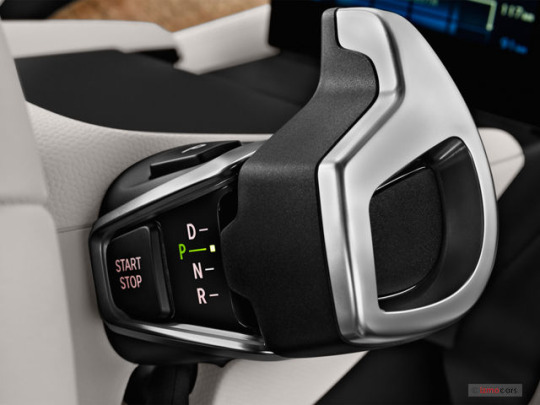

Toyota Prius (Hybrid) & Honda Clarity (Plug-in Hybrid):

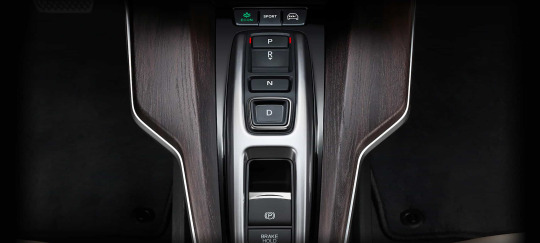
RAM 1500 & Cadillac Escalade (Gasoline):

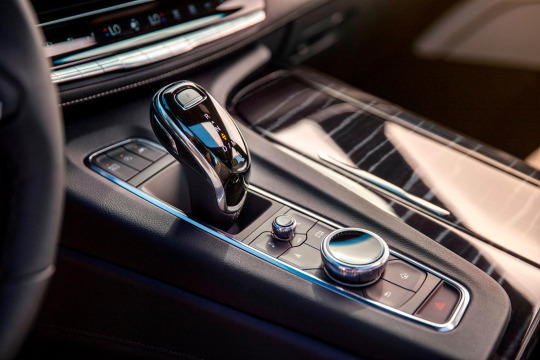
The automotive rules of the American government are pure chaos, and that’s if they're even there at all. If you're seriously asking how Tesla can allow a car to select reverse on its own, and then put the manual override in the touch screen, I mean, that's just scratching the surface.
If you wanna learn more, Technology Connections on YouTube has some great videos on the Turn Signal issue, the EV Regen brake light issue, and the history of the headlight regulations. I highly recommend you check them out because it truly puts into perspective just how awful the NHTSA is at doing its one job: keeping safety standards up-to-date.
#rambles#america#nhtsa#vehicle safety#regulations#car#cars#ev#evs#tesla#fuck tesla#electric cars#electric car#electric vehicles#safety
165 notes
·
View notes
Text
As cold weather sweeps across the U.S., some electric vehicle owners are learning a bitter truth: Low temperatures can stop the cars dead in their icy tracks.
The issue crystallized this week when some Tesla owners in Chicago discovered their EVs' batteries had died in sub-zero temperatures. Drivers also said some of Tesla charging stations weren't working, or if they did work that the stations were taking longer than usual to charge up their vehicles.
“I've been here for over five hours at this point, and I still have not gotten to charge my car,” Tesla driver Brandon Welbourne told CBS Chicago. “A charge that should take 45 minutes is taking two hours.”
What happens to electric vehicles in cold weather?
Here's what to know.
Electric vehicles are less efficient in cold weather, with Recurrent's research finding that below-freezing temperatures reduced driving range up to 30% on 18 popular EV models.
An EV with a 200 to 215 mile range may only go 150 to 175 miles in the cold, Recurrent's Case said, while noting even that reduced mileage is often sufficient for most drivers. “The average person with an EV drives 30 miles a day,” he said.
Still, a shorter range in cold weather could be an issue for some owners if their EV runs out of juice miles earlier than expected, potentially leaving to hunt for an available charger or, worse, stranded in dangerously frigid conditions.
(continue reading) ❄️ 🚗 🥶
#tesla#elon musk#electric vehicles#yikes#as much as i hate those stupid soap bubble looking cars its not just tesla#yeah this might be a prob#lol i think i can wait a bit longer for my ev#i frequently drive to georgia and north carolina and nyc and dc#i couldnt imagine getting stranded on the side of the road in freezing temps#because my charge died about 30% sooner than i planned#and charging stations are so few and far between to begin with#im not knocking the technology but issa problem#❄️ 🚗 🥶
98 notes
·
View notes